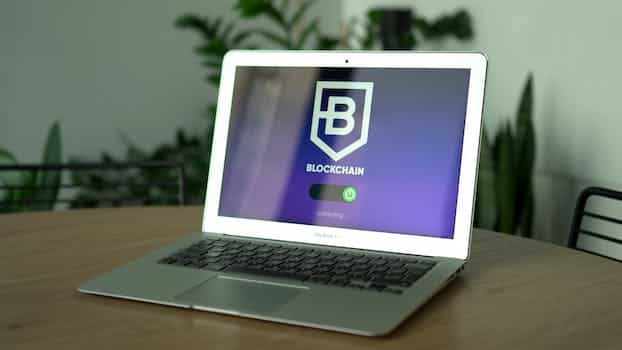In recent years, the rise of decentralized blockchain networks has been a hot topic in the world of technology and finance. These networks, which are based on a decentralized and distributed ledger system, have the potential to revolutionize industries such as banking, healthcare, and supply chain management. In this comprehensive overview, we will explore the key features of decentralized blockchain networks, the benefits and challenges of using them, and the industries that are already adopting this technology. Join us as we delve into the fascinating world of decentralized blockchain networks.
- 1. Introduction
- 1.1. What are decentralized blockchain networks?
- 1.2. How do they work?
- 1.3. Why are they important?
- 1.4. What are the benefits of using decentralized blockchain networks?
- 1.5. What are some examples of decentralized blockchain networks?
- 2. Technical Aspects
- 2.1. Consensus Mechanisms
- 2.2. Smart Contracts
- 2.3. Node Management
- 2.4. Transaction Validation
- 2.5. Mining and Rewards
- 3. Challenges and Future of Decentralized Blockchain Networks
- 3.1. Scalability
- 3.2. Interoperability
- 3.3. Regulatory Challenges
- 3.4. User Adoption
- 3.5. Emerging Trends and Future Prospects
1. Introduction
Blockchain technology has been around for over a decade, but it’s only in recent years that it has gained widespread attention. This is largely due to the rise of decentralized blockchain networks, which are seen as a more secure and transparent way of conducting transactions. In this comprehensive overview, we will delve into what decentralized blockchain networks are, how they work, and why they are becoming increasingly popular.
1.1. What are decentralized blockchain networks?
Decentralized blockchain networks are a type of network where there is no central authority controlling the transactions or data. Instead, the network is run by a group of nodes, each with a copy of the blockchain ledger. Transactions are validated and added to the blockchain through a consensus mechanism, such as proof-of-work or proof-of-stake. Decentralization is seen as a key feature of blockchain technology, as it provides increased security, transparency, and trust.
1.2. How do they work?
Decentralized blockchain networks operate without a central authority or intermediary. Instead, transactions are validated and recorded by a network of computers, or nodes, that work together in a peer-to-peer system. This decentralized approach offers several advantages, including increased security, transparency, and efficiency. Transactions are verified by multiple nodes, which makes it more difficult for any single entity to manipulate the system. Additionally, the lack of a central authority means that there are no fees associated with intermediaries, and transactions can be completed more quickly. Overall, decentralized blockchain networks represent a significant shift away from traditional centralized systems, and have the potential to disrupt a wide range of industries.
1.3. Why are they important?
Decentralized blockchain networks have become increasingly popular in recent years and are seen as a major innovation in the field of technology. These networks eliminate the need for intermediaries in transactions, allowing for a more secure and transparent process. Additionally, decentralized networks are resistant to censorship and hacking, making them a more reliable option for businesses and individuals alike. With the potential for faster transaction times and reduced costs, decentralized blockchain networks have the ability to transform various industries and revolutionize the way we conduct transactions.
1.4. What are the benefits of using decentralized blockchain networks?
Decentralized blockchain networks offer numerous benefits over traditional centralized systems. By distributing data across a network of computers rather than relying on a single centralized authority, blockchain networks are inherently more secure and resistant to attacks. They also offer greater transparency, as every transaction is recorded on a public ledger that can be audited by anyone. Additionally, blockchain networks can facilitate faster and more efficient transactions, as they eliminate the need for intermediaries and reduce transaction fees. Overall, the benefits of using decentralized blockchain networks are numerous and far-reaching.
1.5. What are some examples of decentralized blockchain networks?
Decentralized blockchain networks are becoming more and more popular in today’s digital landscape. These networks are built on the principles of decentralization, meaning that they are not controlled by any single entity or organization. Instead, they rely on a network of nodes to validate transactions and maintain the integrity of the network. Some examples of decentralized blockchain networks include Bitcoin, Ethereum, and Litecoin. These networks are all built on the blockchain technology and have gained significant traction in recent years due to their potential to disrupt traditional industries and create new opportunities for innovation.
2. Technical Aspects
Decentralized blockchain networks operate using a distributed ledger system that allows for secure and transparent transactions without the need for intermediaries. Technical aspects of these networks include consensus algorithms, which ensure that all nodes on the network agree on the state of the ledger, and smart contracts, which allow for programmable transactions. Other technical considerations include scalability, privacy, and interoperability. Overall, decentralized blockchain networks offer a promising solution for a variety of industries seeking secure and efficient means of conducting transactions.
2.1. Consensus Mechanisms
Consensus mechanisms are a crucial component of blockchain networks. They are responsible for ensuring that all nodes in the network agree on the current state of the ledger. In a decentralized network, this is particularly important, as there is no central authority to enforce the rules. There are several different consensus mechanisms that have been developed over the years, each with their own strengths and weaknesses. Some of the most popular include Proof of Work (PoW), Proof of Stake (PoS), and Delegated Proof of Stake (DPoS). Each of these mechanisms relies on a different set of incentives to encourage nodes to participate in the consensus process, and each has its own trade-offs in terms of security, scalability, and energy efficiency. Understanding these mechanisms is essential for anyone looking to build or participate in a decentralized blockchain network.
2.2. Smart Contracts
Smart contracts are a key component of decentralized blockchain networks. They are self-executing contracts with the terms of the agreement between buyer and seller being directly written into lines of code. Once the conditions of the contract are met, the agreement is automatically enforced without the need for intermediaries. This creates a more efficient and transparent way of conducting transactions.
2.3. Node Management
Node management is a crucial aspect of decentralized blockchain networks. Nodes are essentially computers that are connected to the network and help to validate transactions. In order for the network to function properly, it is important to have a sufficient number of nodes that are active and participating in the network. Node operators are responsible for maintaining their nodes and ensuring they are running smoothly. This involves tasks such as updating software, monitoring performance, and troubleshooting any issues that arise. Effective node management is critical to the success of a decentralized blockchain network, as it ensures the network remains secure, efficient, and reliable.
2.4. Transaction Validation
Transaction validation is a crucial aspect of decentralized blockchain networks. In a decentralized system, there is no central authority to verify transactions. Instead, nodes in the network work together to validate transactions by solving complex mathematical problems. This process, known as mining, is what gives blockchain networks their security and reliability. Once a transaction is validated and added to the blockchain, it cannot be altered or deleted, ensuring the integrity of the network. However, the validation process can be resource-intensive and time-consuming, which is why some blockchain networks are exploring alternative consensus mechanisms that are faster and more energy-efficient.
2.5. Mining and Rewards
Mining is an essential aspect of decentralized blockchain networks. It involves using computational power to solve complex mathematical equations in order to verify transactions and add new blocks to the blockchain. This process is necessary to maintain the security and integrity of the network, as it prevents any single party from controlling the system. In exchange for their work, miners are rewarded with newly created cryptocurrency, which they can then sell or hold as an investment. The rewards for mining can vary depending on the network and the amount of competition, but they can be lucrative for those who are willing to invest in the necessary hardware and software. Overall, mining is a crucial technical aspect of decentralized blockchain networks that enables them to function in a secure and decentralized manner.
3. Challenges and Future of Decentralized Blockchain Networks
The challenges facing decentralized blockchain networks are numerous. One major hurdle is scalability. As more transactions are processed on the network, the size of the blockchain grows and it becomes harder for individual nodes to store and process the data. Additionally, the decentralized nature of these networks can make it difficult to coordinate software updates and maintenance. Future advancements in technology may address these issues, but for now, they remain significant challenges. Looking to the future, decentralized blockchain networks have the potential to revolutionize industries such as finance, healthcare, and supply chain management. However, widespread adoption will require continued development and refinement of the technology, as well as increased education and awareness among businesses and the general public.
3.1. Scalability
Scalability has been a major challenge for decentralized blockchain networks. As the number of users and transactions increase, the network can become slower and more congested. This has led to the development of various solutions such as sharding, off-chain transactions, and layer-two protocols. However, these solutions are still in their early stages and require further testing and development. The future of decentralized blockchain networks depends heavily on their ability to scale efficiently and handle large volumes of transactions.
3.2. Interoperability
Interoperability is one of the biggest challenges facing decentralized blockchain networks today. With the rise of multiple blockchain platforms, each with its own unique features and capabilities, the need for cross-chain communication has become increasingly important. However, achieving interoperability is not an easy task. It requires overcoming technical, economic, and governance hurdles. In the future, decentralized blockchain networks will need to find ways to work together seamlessly to maximize their potential and provide users with the most comprehensive and efficient services possible.
3.3. Regulatory Challenges
One of the major challenges facing decentralized blockchain networks is the lack of clear regulations and guidelines. As these networks continue to grow and gain popularity, there is a pressing need for governments and regulatory bodies to develop frameworks that can effectively govern their use. The decentralized nature of these networks also presents unique challenges for regulators, as traditional approaches to oversight and control may not always be applicable. However, without clear regulations, it may be difficult for businesses and individuals to adopt and utilize these networks in a safe and secure manner.
Looking to the future, it is likely that we will see a continued push for regulatory clarity and standardization within the blockchain industry. This will be driven by a growing recognition of the potential benefits of decentralized networks, as well as concerns around issues such as security, fraud, and money laundering. As these challenges are addressed and overcome, we can expect to see continued growth and innovation within the decentralized blockchain space.
3.4. User Adoption
One of the biggest challenges facing decentralized blockchain networks is user adoption. Despite the numerous advantages offered by these networks, such as increased security and transparency, many people still find them difficult to use and understand. This is partly due to the complexity of the underlying technology, as well as a lack of user-friendly interfaces and applications. However, as more and more businesses and individuals begin to recognize the value of decentralization, we can expect to see increased efforts to make these networks more accessible and user-friendly. The future of decentralized blockchain networks depends on their ability to overcome these challenges and attract a broader user base.
3.5. Emerging Trends and Future Prospects
As decentralized blockchain networks continue to gain popularity and adoption, there are certain emerging trends and future prospects that are worth considering. One such trend is the increasing use of blockchain technology in various industries beyond just finance and cryptocurrency. For example, blockchain is being explored for its potential to revolutionize supply chain management, real estate transactions, and even voting systems. Another trend is the development of interoperability between different blockchain networks, allowing for seamless communication and information exchange. In terms of future prospects, blockchain is expected to play a significant role in advancing the Internet of Things (IoT), as it provides a secure and decentralized way to manage the massive amounts of data generated by IoT devices.
However, as with any emerging technology, there are also challenges and potential obstacles that decentralized blockchain networks may face in the future. One major challenge is scalability, as blockchain networks are currently limited in their ability to handle large volumes of transactions. Another challenge is regulatory uncertainty, as governments around the world continue to grapple with how to regulate blockchain and cryptocurrency. Additionally, there is a risk of centralization within decentralized networks, as larger players may come to dominate the ecosystem and undermine the decentralized nature of the technology. Despite these challenges, the future of decentralized blockchain networks remains bright, with many exciting opportunities for innovation and growth.
Conclusion
In conclusion, decentralized blockchain networks are becoming increasingly popular due to their ability to provide a secure, transparent, and efficient way of conducting transactions. With the rise of decentralized applications and the growing interest in cryptocurrency, it is clear that decentralized blockchain networks have a bright future ahead.





